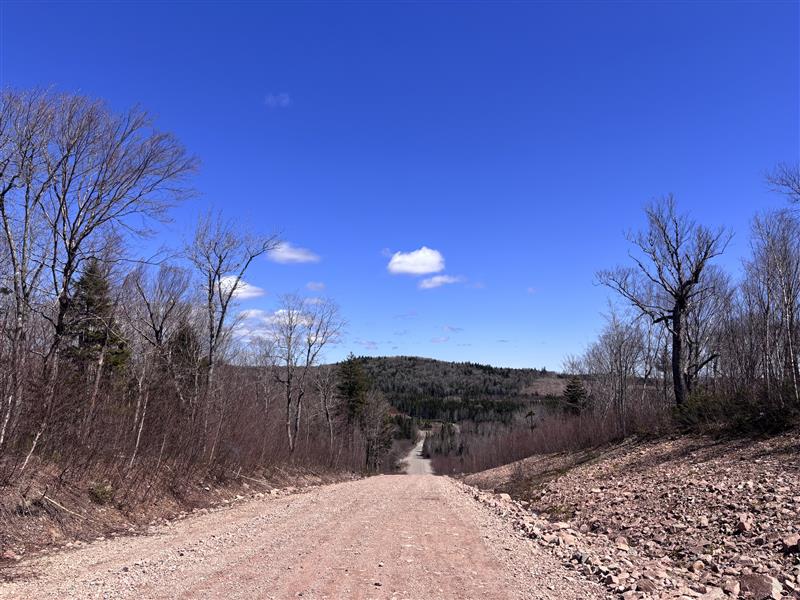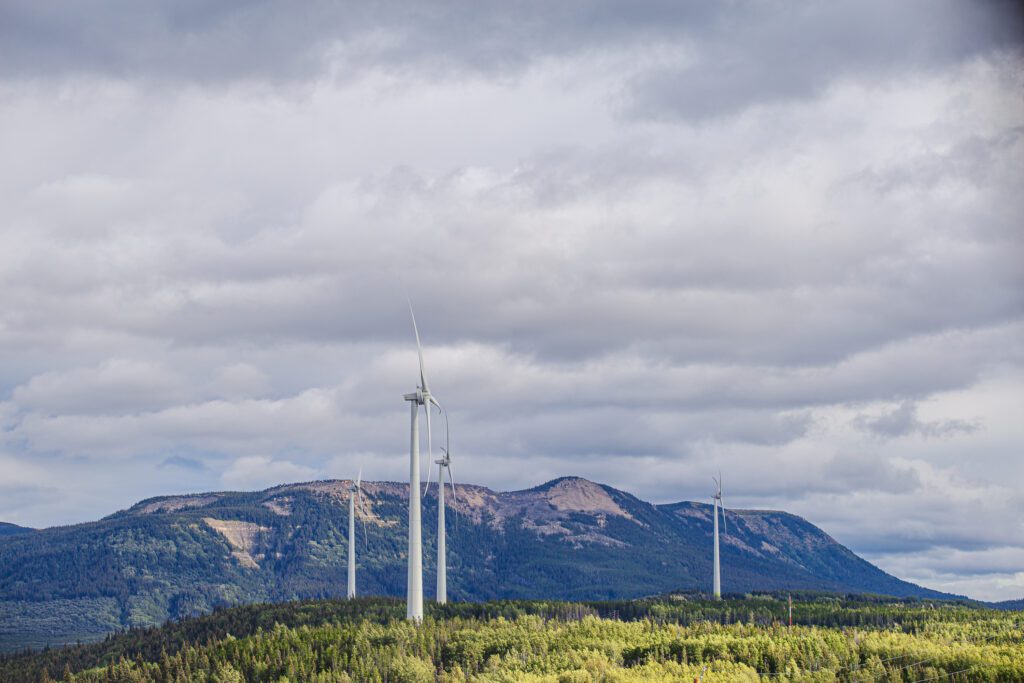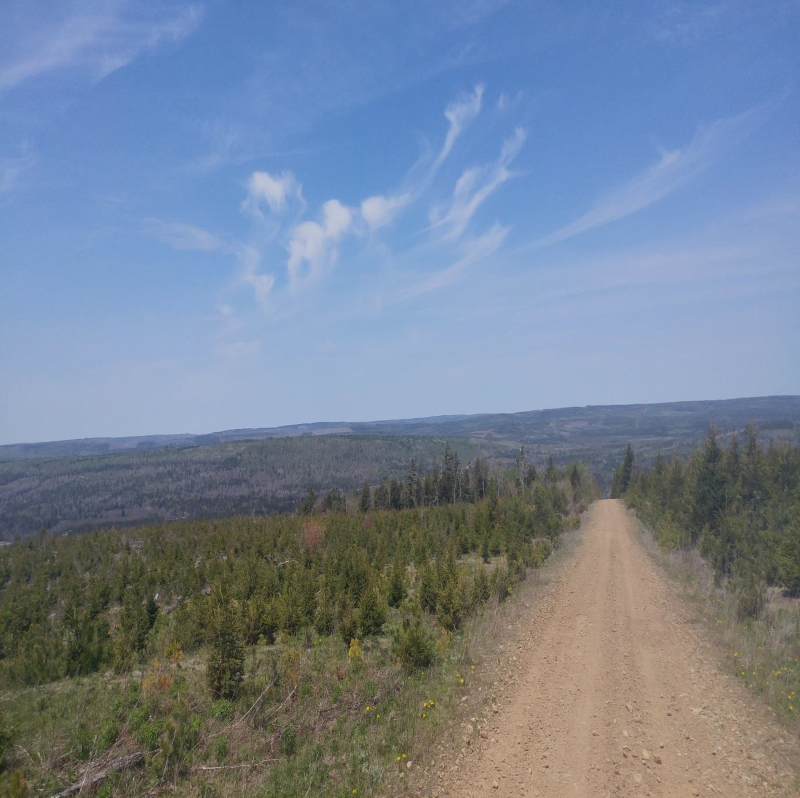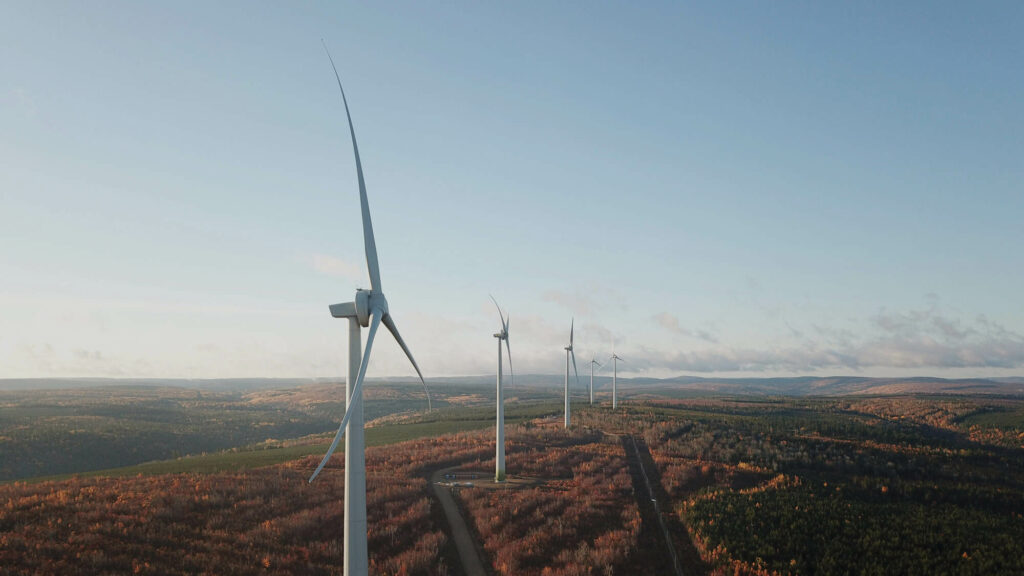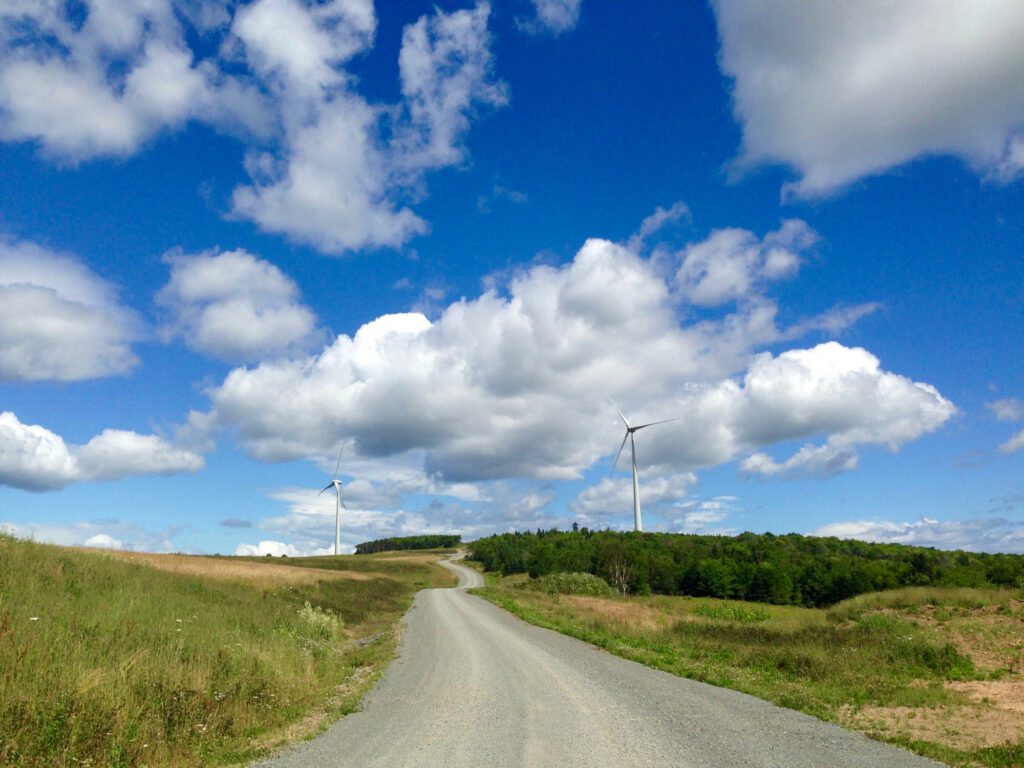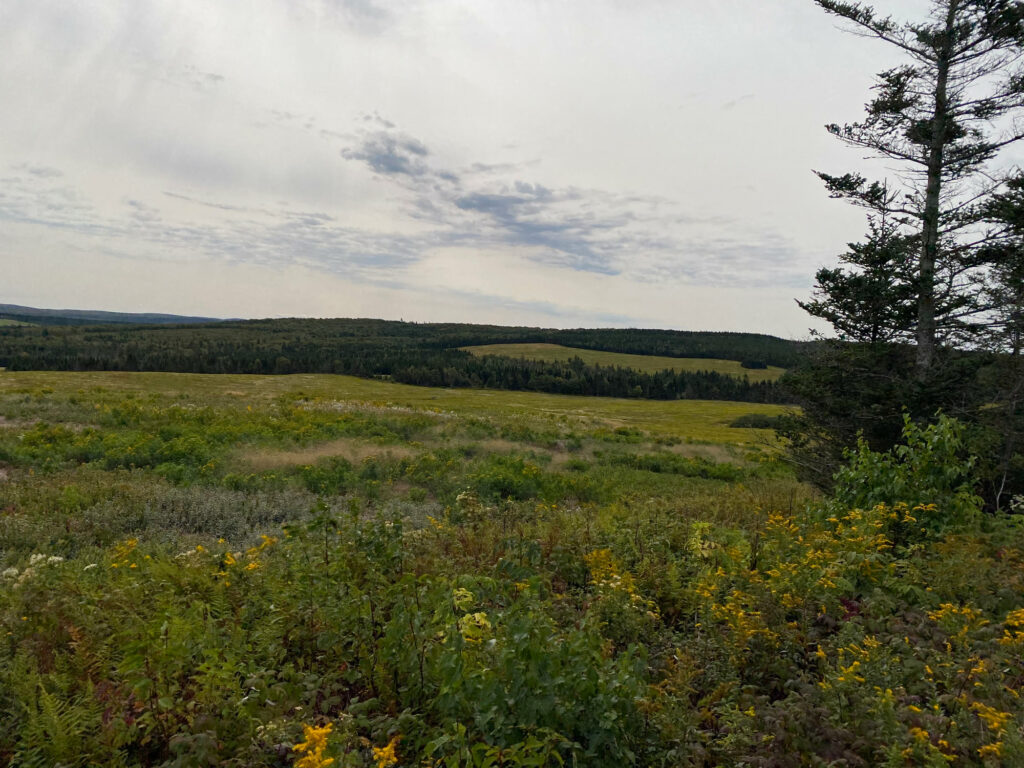Welcome to the official webpage of the proposed Paqt’smawei Sipu Wind Project!
This website was created to provide project information to Rightsholders and stakeholders of the Paqt’smawei Sipu Wind Project, a wind energy project being proposed in southern New Brunswick.
Information sessions and other community engagement activities are planned for this project. The website will be updated as information becomes available.
Mailing List
To join the mailing list for the Paqt’smawei Sipu Wind Project, please click on the link below and fill out your contact information.
About The Project
The Project is proposed to be located approximately 12 km southeast of Springdale on a combination of private and provincial Crown land. The lands were primarily used for forestry activities, meaning much of the existing infrastructure such as forestry roads, can be utilized for access to the Project site. The Project will be developed in phases, with approximately 42 turbine locations being permitted as part of the project’s Environmental Impact Assessment.
The first phase of the project would consist of 15 wind turbines (approximately 105 MW), with potential future expansion utilizing the remaining turbines being permitted. The first phase of the project is estimated to supply enough electricity to power 22,000 New Brunswick homes annually.
The development stage of the Project is currently underway and consists of environmental studies, interconnection studies, wind instrumentation, and site design. It is anticipated that an Environmental Impact Assessment will be submitted to the province in September 2025. Pending approvals, site preparation activities for construction, including tree clearing, could begin as early as Summer 2026.
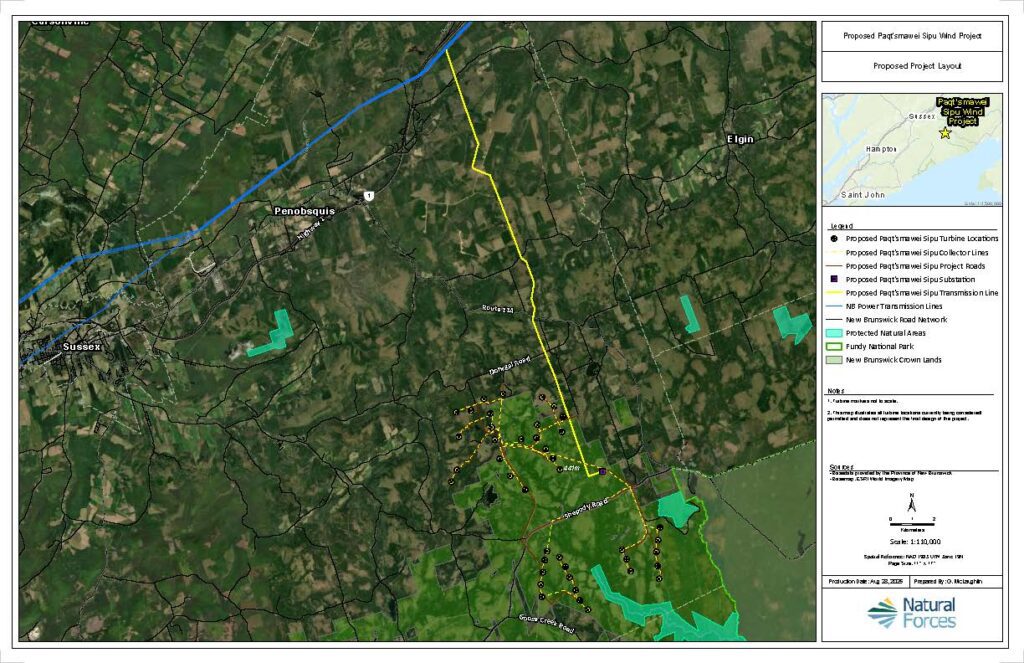

Who is proposing this project?
Phase 1 of the Project is being developed by a partnership between Mi’gmaq United Investment Network, Indian Island First Nation, and Natural Forces.
Indian Island First Nation


Mi’gmaq United Investment Network (MUIN)
Natural Forces


Natural Forces is an independent power producer that develops, owns, and operates wind, solar, hydro and storage projects. With an extensive portfolio of nearly 300 MW of operational renewable energy projects across Canada and with several ongoing projects at various stages in France and Ireland, the company remains committed to advancing sustainable energy solutions.
Established in 2001, Natural Forces is headquartered in Halifax, Nova Scotia with regional offices in France and Ireland. The company places a strong emphasis on partnership by working closely with local and Indigenous communities to develop clean energy projects that drive long-term economic and environmental benefits.
Natural Forces’ senior management team brings over 70 years of collective experience in renewable energy, encompassing all aspects of the project lifecycle across various international markets, including Canada, Ireland and France. As a fully integrated developer and operator of renewable energy assets, Natural Forces manages every stage of project development in-house, from site selection and planning to financing, construction, operations, and long-term asset management.
Project updates
Complete/Ongoing Work:
- Wind data collection
- Interconnection studies
- First Nation engagement
- Public and stakeholder consultation
- Transportation studies
- Site suitability assessment with turbine manufacturer
- Environmental Impact Assessment field and desktop studies
- Municipal development permitting
- Securing a Power Purchase Agreement
Future Work :
- Environmental Impact Assessment submission and approval
- Pre-construction site activities
- Turbine procurement
- Civil work
- Electrical works and interconnection
- Turbine erection
- Project commissioning
- Site reclamation from construction activities
- Operation of turbines
- Post-construction environmental studies
- Site maintenance and upkeep
- Decommissioning and site reclamation
Why here?
The Project location offers favorable elevation and a reliable wind resource. The area allows for turbines to be setback at least 1 km from year-round dwellings. Additionally, the proposed site is situated on Crown land in an area that has undergone several generations of forestry and has many existing access roads that can be used for the Project.
Project Benefits
- Provide annual tax revenue to local and provincial governments over the life of the Project.
- Create local employment and contracting opportunities during the development, construction, operation, and decommissioning phases of the Project.
- Increase revenue to local businesses due to economic spinoff from Project activities.
- Produce emission-free electricity that will both increase energy security and displace generation from fossil fuels, thereby reducing greenhouse gas emissions.
- Increase own-source revenue to Mi’gmaq United Network and Indian Island First Nation through project ownership
- Assist the province with its energy strategy of developing 1400 MW of new wind power, outlined in Powering our Economy and the World with Clean Energy- Our Path Forward to 2035.
Public & Stakeholder Engagement
Natural Forces is committed to engaging with the public, stakeholders, and special interest groups throughout the lifetime of the project. Below is information about the major public and stakeholder engagement activities that have taken place to date, including summaries of the information that has been shared at our information session.
Newsletters
Natural Forces has engaged with, and continues to engage with, stakeholders through a number of avenues, including newsletters. Each of the newsletters circulated to date will be linked below.
Information Session
All of the information that was presented at these Information Session can be seen at the links below:
Public Info Session 1 Handout
Public Info Session 2 Handout
Public Info Session 3 Handout
Public Info Session 4 Handout
What is the process?
1
Development
(Current Stage)
- Assess the wind resource
- Survey for environmentally sensitive features
- Optimize turbine location to capture the wind efficiently and minimize impact on sensitive features
- Begin consultation with regulators and the public
- Conduct and present the Environmental Impact Assessment for environmental approval
- Apply for road, work and construction permits
2
Construction
- Clear trees for roads and turbine pads
- Build access roads and pad areas
- Pour the turbine foundation
- Assemble the wind turbine
- Connect to the electrical grid
3
Operation
- Commission the wind turbines to start producing power
- Conduct construction wildlife monitoring
- Monitor remotely for real time alerts when additional maintenance is needed
- Operate for approximately 30 years
4
Decommission or Retrofit
- Assess wind turbine after approximately 30 years
- Decommission wind turbines in 12 months
- Reclaim the site to its former state OR
- Receive approvals and permits to retrofit the turbines to continue harnessing energy
Environmental Impact Assessment
An Environmental Impact Assessment (EIA) is required for the Project. Field studies began in Fall 2024 with submission of the EIA to the province scheduled for Summer 2025.
To fully assess the potential environmental impacts of the project, comprehensive studies including the following will be conducted:
Topics of Study:
|
|
|
|
|
|
|
|
|
|
|
|
Sound Levels
The most significant factor when limiting sound impacts to nearby residences is where wind turbines are sited. As such, the wind turbine locations are no closer than 1 km from year-round dwellings. Based on this siting, Natural Forces assessed the impact of sound levels from the Project on nearby residences. This assessment uses industry best practices to model how the sound created by the wind turbines will travel over the landscape.
A third-party consultant reviewed the methodology used to carry out this modelling and to validate the results. The consultants, Aercoustics Engineering, concluded that the methodology used is appropriate and provides conservative results, likely overestimating the expected sound levels.
Results of early-stage modelling indicate that turbine sound levels experienced at nearby year-round dwellings during the Project operation will be below 40 decibels, which is comparable to a soft whisper.
Frequently Asked Questions
Some people have concerns about the impact of wind farms on house prices, health, and other issues. As a result, studies have been conducted regarding these issues and are available on Government and Industry association websites. Additional facts about Wind Energy can be found on the CanWEA Wind Facts page (FAQs).
Since wind turbines are large mechanical equipment, they can be expected to produce noise. However, as wind turbine technology has evolved, the sound emitted by wind turbines has decreased. In current designs the mechanical noise is almost obsolete, resulting in only the interaction of the air and the turbine parts producing noise. According to the Government of Nova Scotia, a wind energy project would have a noise level of between 35-45 dB at 350 meters away (Check out the Energy Nova Scotia Wind Page for more information). This noise decreases as the radial distance from the turbine increases. To relate this, the compressor of a refrigerator produces 40-45 dB of noise. Federal and provincial jurisdictions establish minimum distances from turbines to occupied dwellings to minimize this noise.
A study done by Health Canada in 2014 investigated the health effects of wind turbine noise. This study found that wind turbine noise was not associated with self-reported slip, illness, or stress levels. The summary of these results can be reviewed on the Health Canada Environmental and Workplace Health page.
Shadow flicker is created when the sun is at a certain angle behind the turbine. When the sun shines through the blades, the movement of the blades can cause a shadow that flickers on and off as the blades rotate onto the land. New Brunswick has identified sector specific guidelines for wind turbines that require wind energy projects not to exceed 30 minutes/ day or 30 hours/ year of shadow flicker at any receptor. From initial assessments, the Project is not expected to exceed these thresholds due to the distance from year-round dwellings.
The proposed turbines are set back over a kilometer from year-round dwellings.
The turbines being considered for the Project have a maximum height of approximately 200m to blade tip. Wind turbines have gotten larger over the past few years, allowing them to produce more power and reducing the amount of wind turbines needed to meet energy demands. Though these larger turbines are more efficient and reduce ground disturbance by reducing the number of turbines needed, they are taller and thus can be seen from further areas surrounding the Project. Photomontages will be completed where photos are taken of local areas and with software aid the turbine can be realistically imposed on the photo to provide a general idea of what the landscape will look like once the Project is built.
The Project is proposed on provincial Crown land. While the Project is in operation, the land will still be owned by the province. To own and operate the Project, Natural Forces will obtain a wind power lease, or other necessary real property rights, over the land on which the turbines are located.
Based on data published by the National Renewable Energy Laboratory on the emissions produced within the New Brunswick energy sector alongside a lifecycle carbon emission assessment completed for wind projects in Atlantic Canada, the Project is predicted to offset the carbon that may be emitted during its lifecycle within the first year of operation. This allows at least 29 years of operation to offset emissions produced in the New Brunswick electricity sector from fossil fuel emitting sources.
At wind speeds above 30m/s (108 km/h), the turbine blades feather to not catch the wind and the hub rotates the blade, so they are parallel to wind direction. This causes the turbine blades to reduce their speed drastically to ensure no damage is done to the turbines.
It is estimated that the Project will provide approximately 300 jobs during construction. During construction, Natural Forces and our partners make every effort to hire local contractors. Our in-house construction management company, Natural Forces Construction, is set up to ensure smaller contractors are able to participate.
Natural Forces is aware of snowmobile and hiking clubs in the surrounding area and are committed to working closely with these stakeholders to ensure that impacts to snowmobile and hiking trails are minimized.
For more information please contact:
Ellen McDonald, Project Manager
902-483-9592
sale@nijanienergy.org

